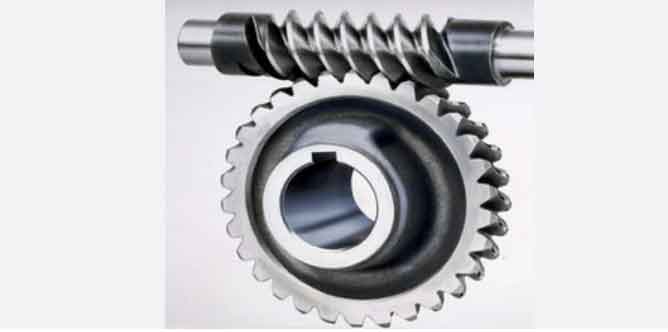Helical and spur gears are two common types of cylindrical gears used in various mechanical systems. Here’s a comparative analysis of helical and spur gears based on their characteristics, advantages, and applications:

1. Tooth Orientation:
- Helical Gears: The teeth of helical gears are cut at an angle to the gear’s axis, forming a helix. This helical shape results in gradual tooth engagement during gear meshing.
- Spur Gears: The teeth of spur gears are straight and parallel to the gear’s axis. They engage abruptly when the gears come into contact.
2. Efficiency:
- Helical Gears: Helical gears offer higher efficiency compared to spur gears. The gradual tooth engagement reduces sliding friction between teeth, resulting in less energy loss during power transmission.
- Spur Gears: While spur gears are simple and cost-effective, they have lower efficiency due to the instantaneous engagement of teeth, leading to more sliding friction and energy losses.
3. Noise and Vibration:
- Helical Gears: The helical shape of teeth provides smoother and quieter gear operation. The gradual engagement reduces impact and noise during gear meshing, resulting in reduced vibration.
- Spur Gears: Spur gears can be noisier and generate more vibration due to the sudden engagement of teeth.
4. Load-Carrying Capacity:
- Helical Gears: Helical gears have larger tooth contact areas compared to spur gears. This increased contact area allows helical gears to distribute loads more evenly, resulting in higher load-carrying capacity and greater durability.
- Spur Gears: Spur gears have smaller tooth contact areas, making them suitable for lighter load applications.
5. Gear Ratios:
- Helical Gears: Helical gears can achieve higher gear ratios than spur gears, making them suitable for applications requiring significant speed reduction or torque multiplication.
- Spur Gears: Spur gears typically have lower gear ratios and are more suitable for applications with less significant speed or torque requirements.
6. Applications:
- Helical Gears: Helical gears are commonly used in gearboxes, automotive transmissions, robotics, and other applications that require smooth and quiet operation, high efficiency, and precise motion control.
- Spur Gears: Spur gears are widely used in various simple and cost-effective applications, such as in clocks, electric fans, and some industrial machinery.
7. Gearbox Design:
- Helical Gears: Helical gears are preferred in applications where reduced noise and vibration are critical, making them suitable for high-performance gearboxes.
- Spur Gears: Spur gears are more commonly used in simpler gearbox designs, especially in applications where noise and vibration are less critical.
8. Manufacturing Complexity:
- Helical Gears: Helical gears are more complex to manufacture due to the helical shape of teeth, requiring specialized gear-cutting processes.
- Spur Gears: Spur gears are simpler to manufacture, making them more cost-effective for certain applications.
In summary, helical gears offer advantages in terms of efficiency, smoothness, and load-carrying capacity, making them suitable for high-performance applications where reduced noise and vibration are essential. On the other hand, spur gears are simpler and more cost-effective, making them suitable for lighter load applications and where noise and vibration are not significant considerations. The choice between helical and spur gears depends on the specific requirements of the application and the desired performance characteristics.
